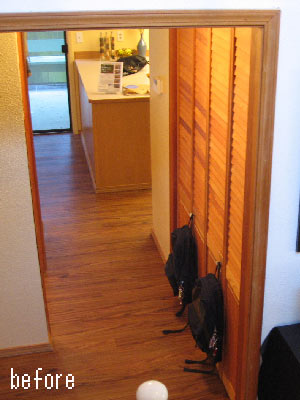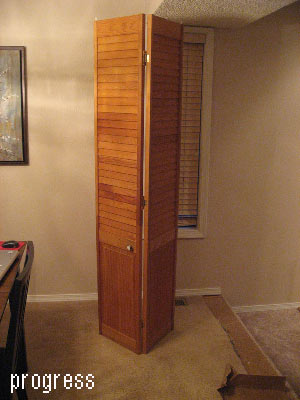File this one under “minor change that made a huge difference”. When we moved in, I declared the yellow unihabitable and painted over it with a pale beige. But the beige now clashes with the kitchen’s mint green wherever they meet. So we bid farewell to our beige hall and turned it green to match the kitchen.
The result: seamless, wonderful pale green from the moment you step into the hallway. It even makes the kitchen feel bigger! One color = win.








